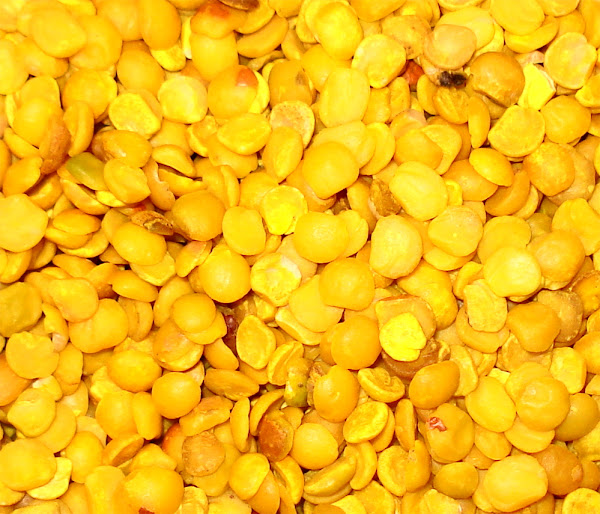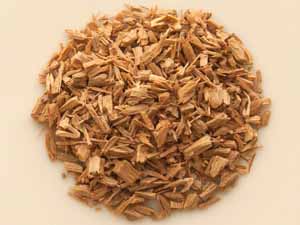Growing pigeon pea is very popular and it is cultivated widely in tropical and semitropical regions. Growing pigeon pea is especially very popular in India. Andhra Pradesh, Madhya Pradesh, Uttar Pradesh, Gujarat, Karnataka and Maharashtra are the major states in India for growing pigeon pea.
Pigeon pea (Cajanus cajan) is actually a perennial legume from the family Fabaceae. The seeds have become a common food in Asia, Africa and Latin America. And the seeds is consumed on a large scale mainly in south Asia (especially India), and it is a major source of protein for the population of the Indian subcontinent.
The pigeon pea plants are native to Asia, but today it is grown in many warm and tropical regions throughout the world. It is a short-lived perennial plant and can actually grow into a small shrubby tree and can make an excellent low hedge or windbreak.
Growing pigeon pea is very easy, and you can actually start growing easily (even if you are a beginner) in both small and commercial scale. The split pigeon pea is one of the most popular pulses in India, being an important source of protein in a mostly vegetarian diet.
Fresh young pods are also eaten as vegetable in some regions where it grows. The pigeon pea seeds are very healthy and contain some important amino acids (such as lysine, methionine and tryptophan).
The pigeon pea is used in many different ways in many different parts of the world. It is often used for making lentil soup in India. While in Dominican Republic and Hawali, the seeds are used for canning and they have a nutty-grainy taste.
Origins
Growing pigeon pea is not a new practice, and the cultivation of this crop goes back at least 3500 years. The center of of origin of the pigeon pea is probably peninsular India, where the closest wild relatives occur in tropical deciduous woodlands.
According to Wikipedia, archaeological finds of pigeon pea dating to about 3400 years ago have been found at Neolithic sites in Kalaburagi, Karnataka and it’s border areas and also the south Indian states such as Kerala.
The pigeon pea came to the American continent by means of the slave trade, probably in the 17th century. And the pigeon pea traveled to East and West Africa from India.
Other Names of Pigeon Pea
Pigeon pea is known by many other different names in different parts of the world and in many languages. In India, the pigeon pea is called Rohor dail in Assamese, Orhor dal in Bengali, Tuver ni dal in Gujarati, Toor dal or Arhar dal in Hindi, Togari bele in Kannada, Thuvaram Paruppu in Tamil and Malayalam, Toor dal in Marathi, Rahar daal in Nepali, Harada dali in Odia, Tubarika in Sanskrit and Kandi bedalu in Telugu.
The pigeon pea is also known by some other names in many other parts of the world. It is known as no-eye pea, tropical green pea, red gram, gandule bean, gandul, guandu, mgbumgbu, fio-fio, mbaazi, gungo pea in Jamaica, chicharo in Latin America, arveja in Ecuador, mzimbili mussa in Tanzania, kardis or nandolo in Malawi and gungo pea/gunga pea or Congo pea in Africa.
Advantages/Benefits of Growing Pigeon Pea
There are some advantages or benefits of growing pigeon pea. Here we are describing about the most important advantages or benefits of growing pigeon pea.
- The pigeon pea plants are very strong and hardy. They can even survive in poor soil conditions and they are able to tolerate dry weather.
- It is a nutritious and high-protein pulse crop. The plants are perennial for up to 5 years.
- You can use all the parts of pigeon pea plants. The leaves can be used as animal feed for feeding livestock animals. And the woody parts can be used for firewood.
- The pigeon pea plants grow relatively faster and they make good shade for other crops.
- The pigeon pea plants have deep taproot. And they can take nutrients and water from deep in the soil. And for their deep taproot, the pigeon pea plants can be used for controlling soil erosion.
- In commercial production, the pigeon peas can make good profits.

How to Start Growing Pigeon Pea
Growing pigeon pea is very easy, especially in all tropical and semitropical regions. The pigeon pea plants are very hardy and they can survive well in almost all soil types, even in poor soil types.
They are drought tolerant and can do well in dry conditions. However, here we are describing more information about growing pigeon pea from planting, caring to harvesting.
Selecting Location
The pigeon pea plants are not picky about soil types and locations. Although, selecting a good location with full sun and well drainage system will be good for the growth of these plants.
Pigeon pea plants can grow and withstand on various soil types. But selecting a location with full sun, fertile and well-drained loamy soil will be good for them.
Saline-alkaline or waterlogged soils are not good for pigeon pea cultivation. pH level ranges from 6.5 to 7.5 is considered good for growing pigeon pea. So, consider all these factors while choosing location for growing pigeon pea.
Prepare the Soil
The pigeon pea plants can be grown in almost all types of soil, even in very poor soil. But preparing the soil by tilling and adding fertilizers into it will ensure good growth of the plants and will increase total yield.
The pigeon pea plants are deep rooted crop, and they responds well to proper soil preparation. So, till the soil at least 8 inches deep during the dry season, followed by 2 or3 harrowings and disc ploughing. Remove all types of weeds during this stage.
After properly tilling the soil, add organic materials into it. You should apply organic materials 2-4 weeks before sowing seeds. And level the soil perfectly after adding organic materials into the soil.
For commercial pigeon pea cultivation, apply 10-13 kg urea and 40-45 kg super phosphate per acre. Apply all these fertilizers when you add organic fertilizers into the soil.
Climate Requirements for Growing Pigeon Pea
The pigeon pea plants generally require moist conditions for the first few weeks (about 8 weeks), and then gradually require drier conditions (especially during flowering and pod development stage).
Average required rainfall for growing pigeon pea is between 600 and 650 mm. Rains during the flowering stage will result in poor pollination. Temperature ranges between 25 °C and 35 °C is ideal for growing pigeon pea. But the plants can also survive as low as 15 °C and as high as 40 °C temperature.
Best Time for Growing Pigeon Pea
The pigeon peas can be grown successfully in summer, rainy and winter season. Sow the seeds in April for summer crop, in June for rainy and in September for winter crop.
Select a Variety
There are many varieties of pigeon peas available. Some of the popular pigeon pea varieties are;
- AL 15
- AL 201
- AL 882
- ICPL 151 (Jagriti)
- IPA 203
- IPH 09-5
- PAU 881
- PPH 4
- Pusa Ageti
- Pusa 84
- UPAS 120
Along with these varieties, there are also some other varieties available. You should choose that variety which grows well in your area. You can consult with any existing farmer in your area or contact your local agriculture department.
Purchase Seeds
After selecting your desired variety, purchase seeds from any of your nearest market. The pigeon pea is very common and the seeds should be easily available in your area. You can also consider ordering the seeds online, because today there are numerous suppliers available with online stores.

Seeds per Hectare
Exact amount of seeds can vary depending on the variety. But on average, you will need about 15 kg seeds per hectare.
Planting
The pigeon pea seeds can be planted either directly into the soil or in rows. We recommend planting the seeds in rows, because it will make the caring process much easier. Space the rows to about 1 feet apart in smaller varieties, and about 1.5 feet apart for the tall varieties. In both varieties, sow the seeds to about 6 to 8 inches apart.
Depth of sowing the seeds play a very important role in the germination of the seeds. Don’t sow the seeds more than 1 inch deep. Light watering after sowing the seeds will help to germinate the seeds better. And if you can keep the soil moist consistently, then the seedlings will appear within 1 or 2 weeks.
Treating the seeds before sowing will help to grow better and healthy plants. So, treat the seeds with Thiram or Carbendazim at the rate of 2 grams per kg of seed, 24 hours before sowing the seeds.
Caring
Taking additional care of the pigeon pea plants will result in good growth of the plants which will ultimately maximize the total yield. Here we are describing more about the caring steps for growing pigeon pea.
Fertilizing: Applying additional fertilizers is not required if you already have prepared the soil by following the methods mentioned above.
Watering: For small scale production, you can lightly water the plants on a regular basis. But for large scale or commercial production, the first irrigation should be done within 3-4 weeks after sowing the seeds. And remaining irrigation depend upon rainfall intensity. Further irrigation during flowering stage is essential for good yield.
Mulching: Mulching will help to retain moisture into the soil and it will also help to reduce weeds from the field. Use grass clippings, dried leaves, straw, hay or compost as mulch.
Controlling Weeds: Try to control weeds while preparing the soil. If you notice additional weeds, try hoeing about 3 weeks after sowing the seeds. And another hoeing is required after about 6 weeks. Hand controlling weeds is always a good idea.
Pests and Diseases
Like many other commercial crops, the pigeon peas are also susceptible to some common pests and diseases. Blister beetles, pod borer, cercospora leaf spot, wilt, cankers, phytophthora stem blight and sterility mosaic are some common pests and disease for the pigeon pea plants.
Consult with an specialist in your area for having recommendation about controlling all these. You can also contact your nearest Krishi Vigyan Kendra for help.
Harvesting
Both mature and immature pigeon peas can be harvested. For using as vegetable, you can start to harvest when the plants have green colored leaves and pods. And for grain purpose, start harvesting when 75 to 80 percent pods turn brown and dry. Don’t delay for harvesting the grains. Because, delaying can result in damage of the seeds.
In small scale production, harvesting can be done by hand. And use machine for harvesting in large scale production. After harvesting, keep the bundles of the plant upright for drying purpose. And then remove the grains from the plants by threshing or traditionally by beating the plants by sticks.
Yield
Total yield depends on many different factors. But on average, you can expect about 700 kg yield per hectare.

Pigeon Pea Nutrition
Pigeon pea is very nutritious and it is very good for human health. It is rich in protein and has some important amino acids such as lysine, methionine and tryptophan.
Uses of Pigeon Pea
The grain, and the whole pigeon pea plants have many different uses. Some of the most important uses of pigeon pea are listed below.
- Pigeon pea seed is very nutritious, and it is an excellent source of protein.
- The pigeon pea bush has many uses in the sustainable landscape. The plants are also used to reduce soil erosion.
- Some people use the shrub as a living hedge around fruit trees due to it’s ability to fix nitrogen.
- The pods, leaves, flowers or the entire plants are used as an excellent animal fodder.
Hope you have enjoyed this guide for growing pigeon pea. Good luck!





